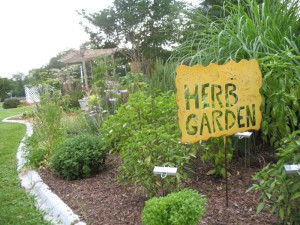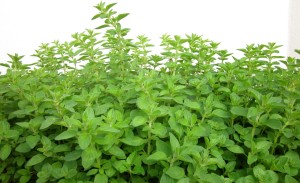Herb gardening
 The following piece was written by Master Gardener Phyllis Jachowski, who has received training through Colorado State University Extension’s Master Gardener program and is a Master Gardener volunteer for Larimer County.
The following piece was written by Master Gardener Phyllis Jachowski, who has received training through Colorado State University Extension’s Master Gardener program and is a Master Gardener volunteer for Larimer County.
Q: What herbs are easy to grow?
A: What you choose is a personal choice of the flavors you love in foods or teas. You’ll be surprised how easy it is to grow herbs. Some favorite herbs include parsley, cilantro, oregano, thyme, rosemary, marjoram, mint, basil, sage and dill. I also love to grow edible flowers (Note: not all flowers are edible; refer to CSU Extension publication #7.237 at ext.colostate.edu for more information). Chives, nasturtium, violets, sweet peas, pansies, small flowered geraniums, small marigolds, dianthus or pinks and miniature roses are safe to eat and easy to grow. Prior to incorporating edible flowers into your diet, consult with your physician and eat in small quantities. Consider a large container pot for taller, edible flowers like borage, English daisies, chamomile, bee balms and anise hyssop, and for larger yields of dill and sage.
Q: What about planting, plant care and harvesting herbs?
A: You can grow herbs from seed, but it takes more time. Right now there is a plentiful supply of herb starts at farmers’ markets, nurseries and garden suppliers. Remember, you’re eating them, so choose only flowers and herbs that are grown without pesticides. Herbs require 6-8 hours of sun. West and south exposure is ideal.
Be sure there’s a drainage hole in the container. Plant in a well-drained potting media. Water thoroughly following plants and monitor moisture levels throughout the summer. Many herbs prefer drier conditions, but plants should never wilt. Most herbs won’t need fertilizer with planting. Unless you’re collecting and using the flowers/seeds, be sure to deadhead frequently. The plant will produce a greater amount of foliage.
Harvest herbs early in the day by snipping off desired amount of leaves—cut no more than 1/3 of the top. Harvest edible flowers early in the day when they are the freshest. New flowers will continue to grow as you pick old ones.
 For more ideas, refer to these references:
For more ideas, refer to these references:
Herbs www.ext.colostate.edu/mg/Gardennotes/731
Edible flowers www.ext.colostate.edu/pubs/garden/07237
Shrubs and vines
The following piece was written by Master Gardener Anne Wuerslin, who has received training through Colorado State University Extension’s Master Gardener program and is a Master Gardener volunteer for Larimer County.
If you are enjoying lilacs now, consider planting a Seven-Son Flower shrub (Hepatacodium miconoidides), for lilac-like blooms in fall. This Plant Select shrub or multi-stemmed tree is a fast grower, drought tolerant, and bears white blooms at the tips of its branches, complete with red sepals. It blooms best in sun, can tolerate some shade and can take aggressive pruning as it matures.
Spring blooming five-leaf Akebia vine (Akebia quinata), also known as chocolate vine, makes for a wonderful and rapidly growing cover for arbors and fences. Its bluish-green foliage is offset by terminal deep purple flowers. Foliage is fragrant and the vine can tolerate shade.
————–
CSU Extension in Larimer County is a county-based outreach of Colorado State University Extension that provides information you can trust to deal with current issues in agriculture, horticulture, nutrition and food safety, 4-H, small acreage, money management and parenting. For more information about CSU Extension in Larimer County, call (970) 498-6000 or visit www.larimer.org/ext.
—————
Looking for additional gardening information? Check out the CSU Extension Horticulture Agent blog at www.csuhort.blogspot.com for timely updates about gardening around the state.
————–
Visit PlantTalk Colorado for fast answers to your gardening questions! PlantTalk is a cooperation between Colorado State University Extension, GreenCo and Denver Botanic Gardens.